
WE ARE MORE EFFICIENT MOVING WITH ROTATION THAN WITHOUT IT! AND THE BETTER & FASTER & MORE EXPLOSIVE THE ROTATION IS, THE BETTER & MORE EFFICIENT THE SWING WILL BE.
And, all rotation is NOT of the same quality; for instance, the rotation in a golf swing or a medicine ball toss is WAY DIFFERENT from the rotation in a high level, MLB hitter’s swing.
The secret to “little guy’s power” is torque, which I’m going to refer to as CULTIVATING ELASTICITY. Muscles applying force from BOTH SIDES OF THE SPINE – “FORCE COUPLE”- to create stretch/elasticity and “TRUE” rotational forces.
What is TORQUE? Separation, Coil, X Factor Stretch……? CULTIVATING ELASTICITY & STRETCH IN ALL 3 PLANES OF MOTION.
TORQUE IN HITTING IS MORE THAN JUST TRANSVERSE DIFFERENTIAL
Most young hitters are introduced to the basic concept of coil or torque or separation in the TRANSVERSE PLANE ONLY, working in equal & opposite directions. I see it over & over again: a hitting instructor or video or drawing of an arrow on the hips pointed in the direction away from home plate and an arrow on the shoulders pointed in the opposite direction, towards the catcher; and basically say, “THAT’S IT — that’s torque”. And unfortunately, young hitters are never taught any differently as they progress.
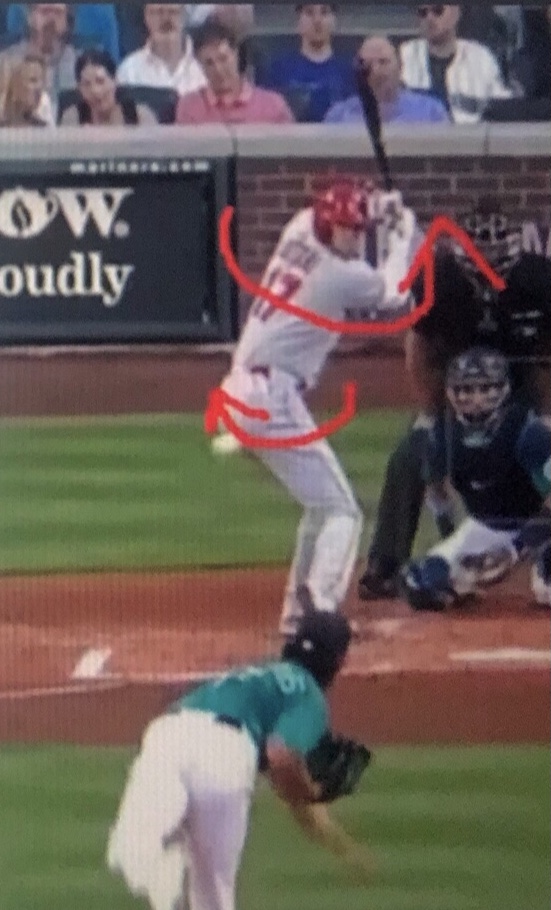
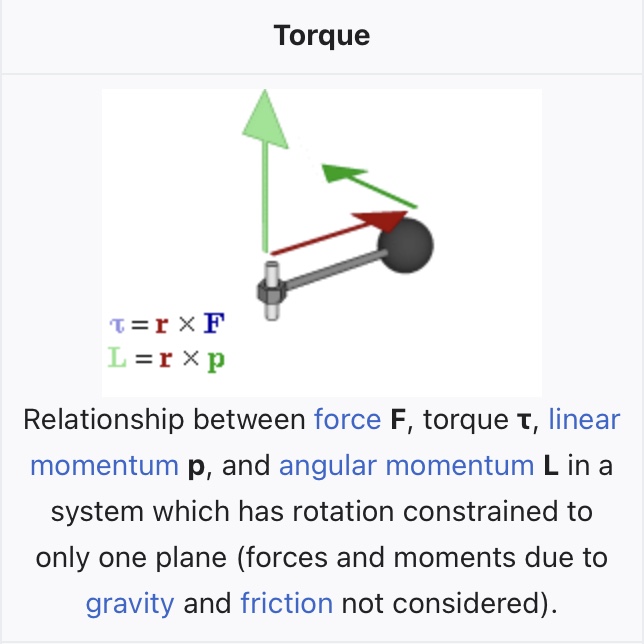
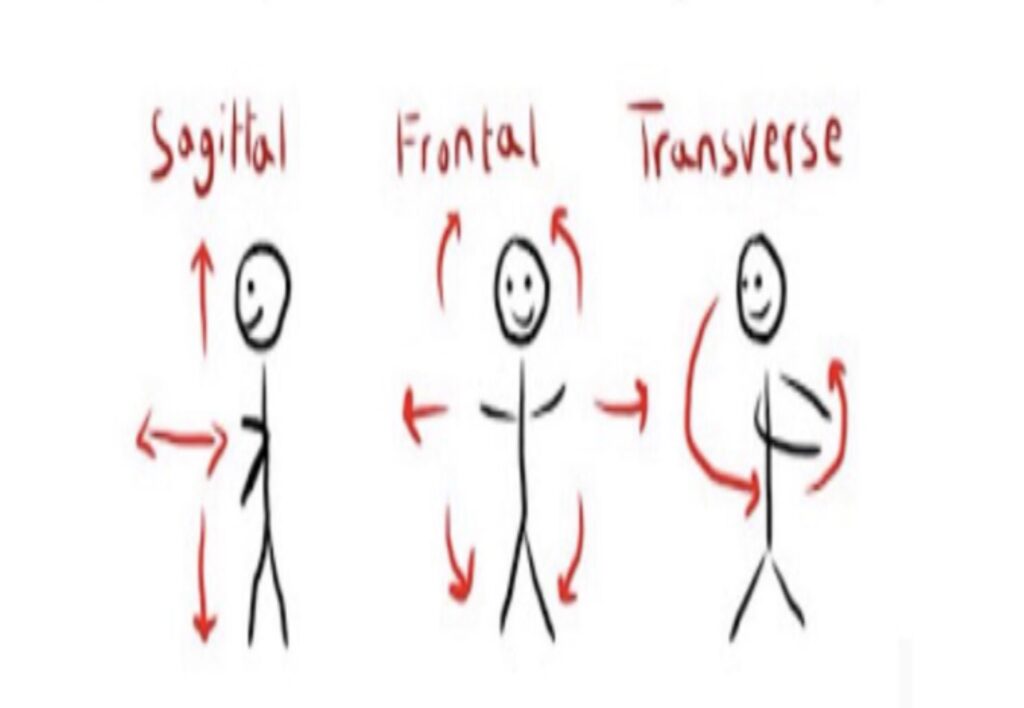
In the “novice”, transverse plane only of torque, the instructor wants an imaginary line that represents the pelvis to be pointed away from home plate and the imaginary line along the shoulders to form an “X” by counter rotating towards the catcher.
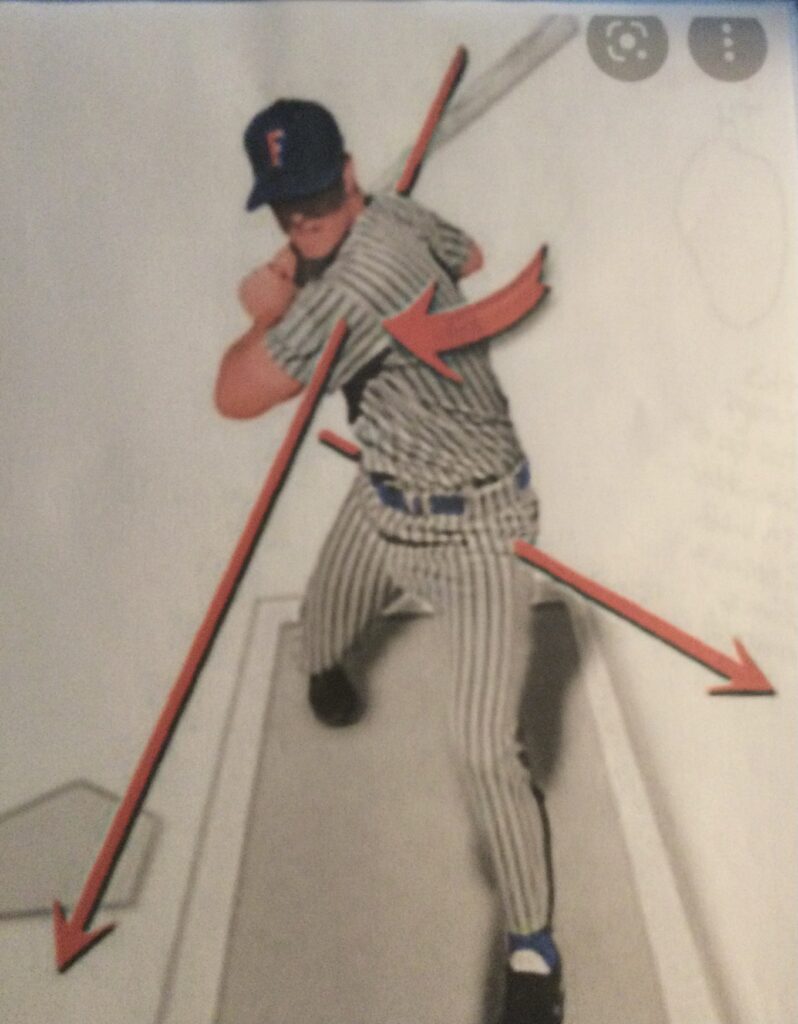
Cues that I’ve heard used that reinforce this novice, oversimplified concept of transverse movement of the hips and shoulders in opposite direction are:
- “pinch your back elbow back & behind you”,
- “show your numbers on the back of your jersey to the pitcher”,
- “pull backwards with your hands as you move forward”,
- “create separation between your upper and lower body by striding forward with your front leg while walking away from your hands”,
- “let your hands go backwards until yanked to the ball by your rotating hips”,
- “dip your back shoulder down by tilting rearward as you start your swing”,
- “get to your balance point point on one leg when your stride foot lifts”, &
- “hips open, top half closed”.
All of the above cues simplify “movement” into only one plane of motion and isolate just the hips and shoulders.
THE PURPOSE OF “TORQUE” – CULTIVATING ELASTICITY IN HITTING
What’s the purpose of creating torque for a hitter?
Good hitters cultivate elasticity and stretch through:
- movements of the pelvis loading,
- posture,
- shifting the center of mass; moving the middle,
- rotation,
- arm action,
- barrel positioning, and
- using all three (3) planes of motion.
Hitting is high intensity. The joints, muscles & nervous system are functionally integrated. The connective tissue is stretched under stress with multiple times of the hitter’s body weight and it is also stretched under a time constraint.
Sensory information is connected to the motor response via the central nervous system (CNS). The intensity of the training must continually increase to faster and faster tempos to challenge the response of the sensorimotor system.
Muscles have an elastic quality to them. They can be stretched. The tendons they connect to can be stretched. The fascia & other connective tissue surrounding the muscle can also be stretched. When the elastic elements are stretched to the right length then force production is amplified.
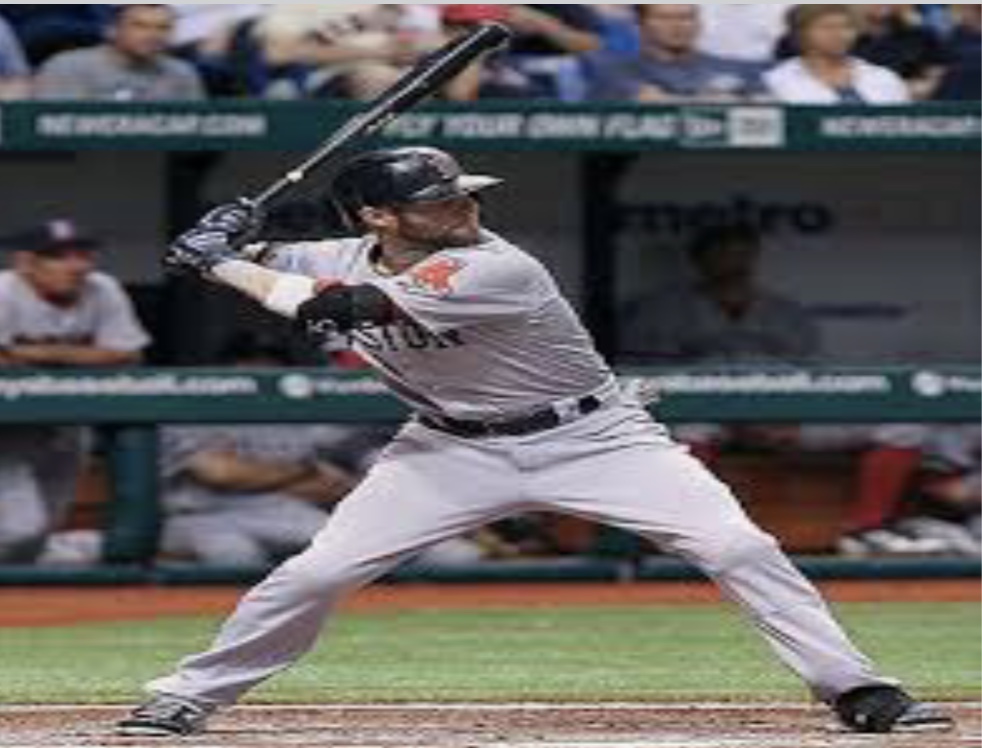
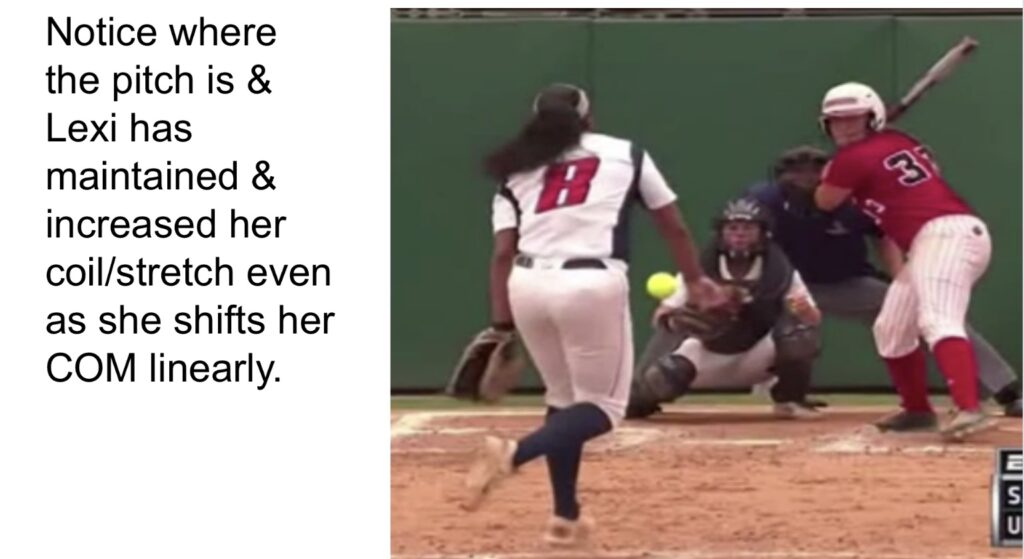
* Her pelvis & spine are hinged in the sagittal plane (often referred to as “posture”);
* her pelvis/femurs/glutes have movement in the frontal plane;
* her abdominal obliques are regulating any frontal plane torso “bend”;
* her pelvis via the acetabular femur socket creates “coil” in the transverse plane; and
* her torso is “force coupling” in the transverse plane between the latissimus dorsi and its contralateral connection to the gluteus maximus and thoracic spinous in the middle of her back.
This is NOT an anatomy lesson. Lexi did not have to learn the anatomy of the body to make these movements, nor do your hitters.
REMEMBER, Lexi transferred from Texas Tech to UL after her freshmen year where her movement patterns were “very novice” and during which she hit ZERO home runs. The complex, elite movements seen above happened within 6 months and resulted in her hitting 24 home runs the very next season.
These movements were all taught and engrained with simple drills and gadgets that were BASED ON THIS understanding of anatomy and the degrees of freedom challenge and knowing the SWING ATTRACTORS.
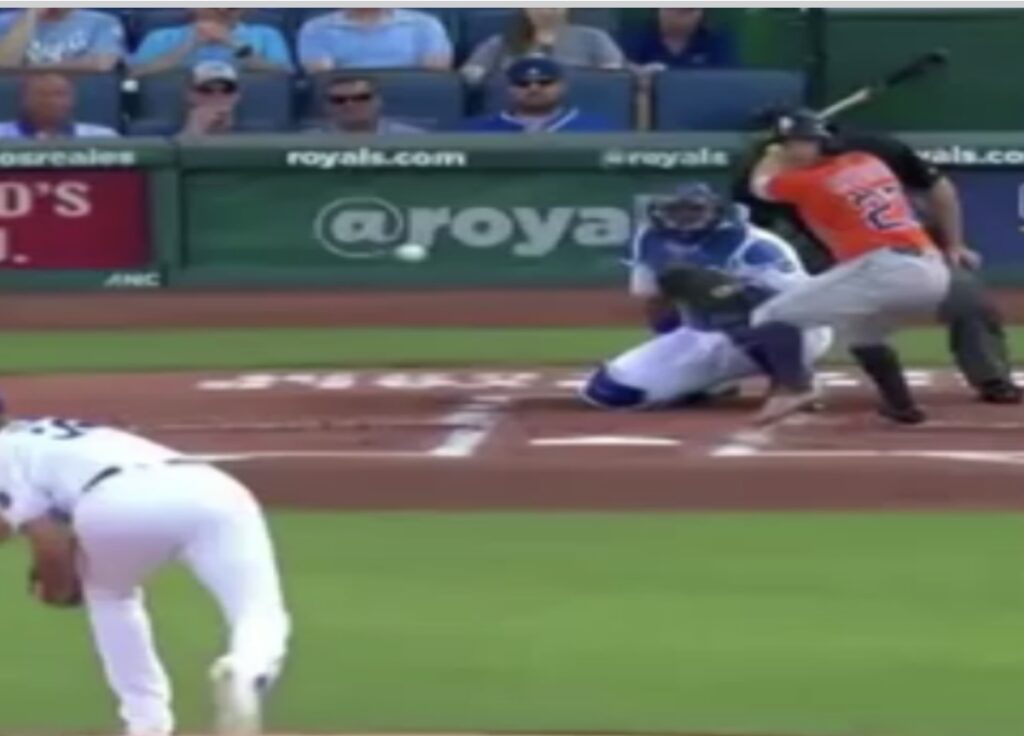
The purpose (WHY) &/or theory behind a hitter creating and cultivating elasticity (coil or separation or stretch or differential) is to pre-tense and take the slack out &/or have some dynamic, stretchy, elastic, rubber band energy so he/she can use & cultivate that elasticity to release it in a flash whenever the hitter chooses.
In the last 175 milliseconds, cognitive control is not possible. Now, the body and it’s slings are in charge to finish the swing, decentralized from the CNS.
The hitter has put the body into a bind with the incoming pitch just 12 feet away – the subconscious has predicted, anticipated, and made its best guess of the speed (arrival time) and location (final destination) of the pitch – and now, the body has the ability to adjust and adapt to an immense number of situations.
These SLINGS and synergies will coordinate without deliberative thought process to self-organize and finish the swing “IF” THE HITTER HAS CULTIVATED THE ELASTICITY CORRECTLY.
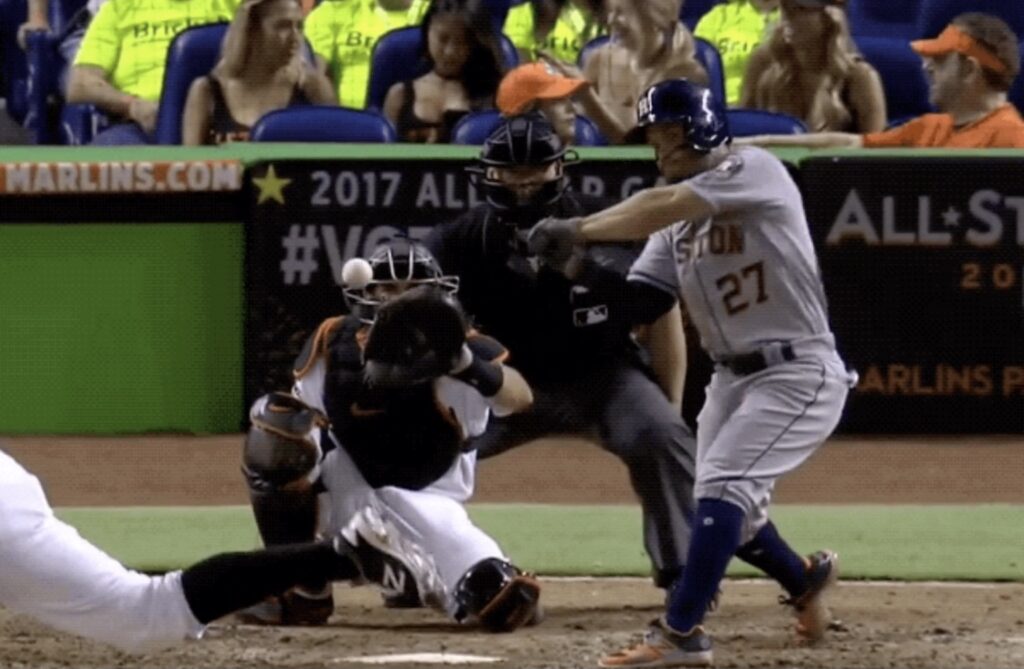
The latissimus dorsi is the widest and most powerful muscle of the back. It has contralateral connections to the opposite side gluteus maximus and also has connections to the humerus and thoracic spinous processes in the middle of the back. The abdominal obliques are responsible for the lateral side bend and the extension of the back side hip.
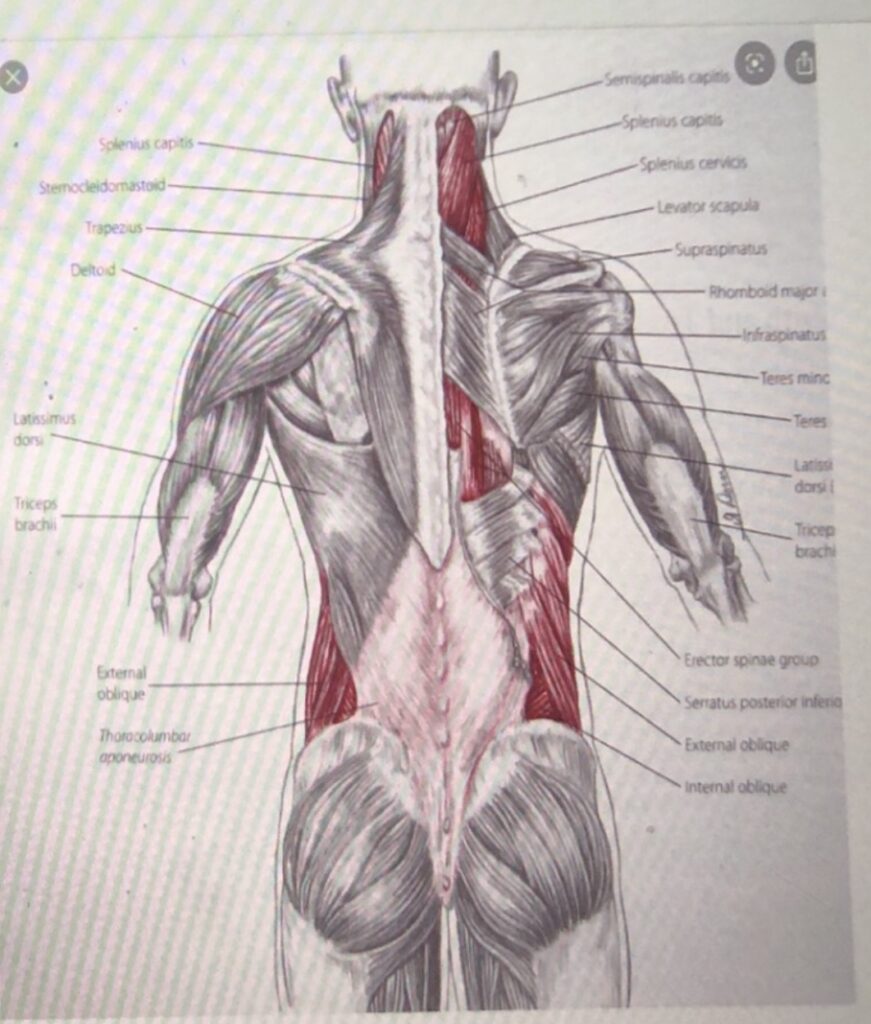
IT’S NOT THE SAME AS GOLF
Torque with high level hitters is NOT the same movement pattern as golf.
In the golf photo, it seems the golfer is literally trying to create an X with the dowels on the pelvis and across the shoulders. It seems the golfer keeps his hips stable while the shoulders counter rotate in a transverse plane.
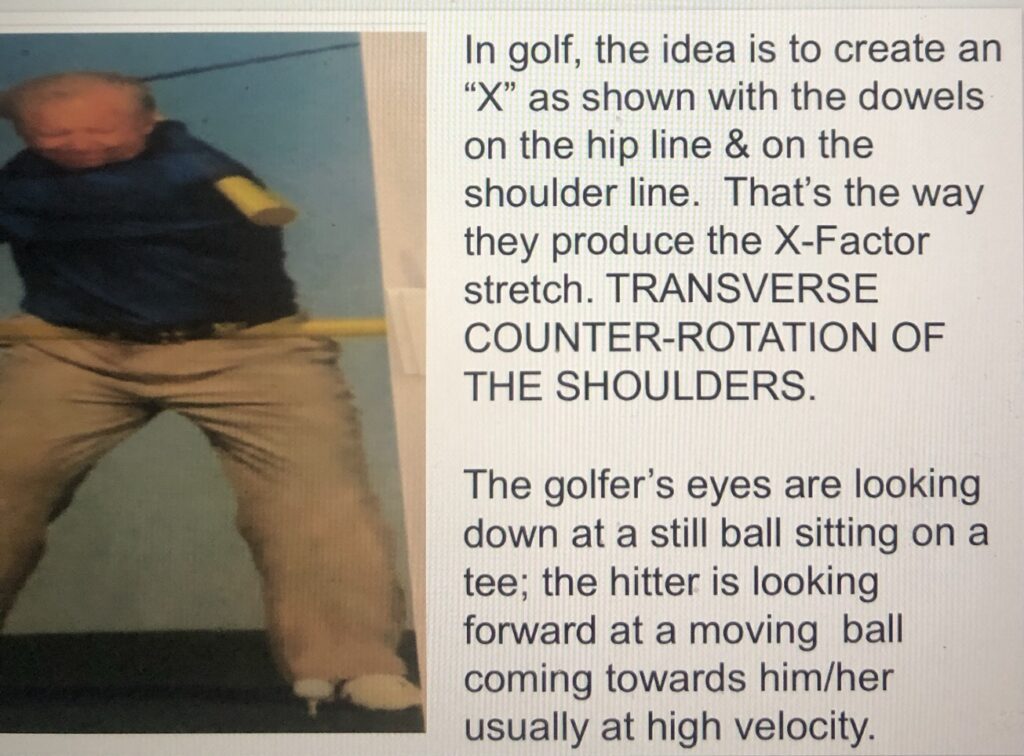
Do high level hitters try to create an “X” like the golfer with as much shoulder turn as possible? Do high level hitters try to stretch a rubber band by counter rotating the shoulders as much as possible?
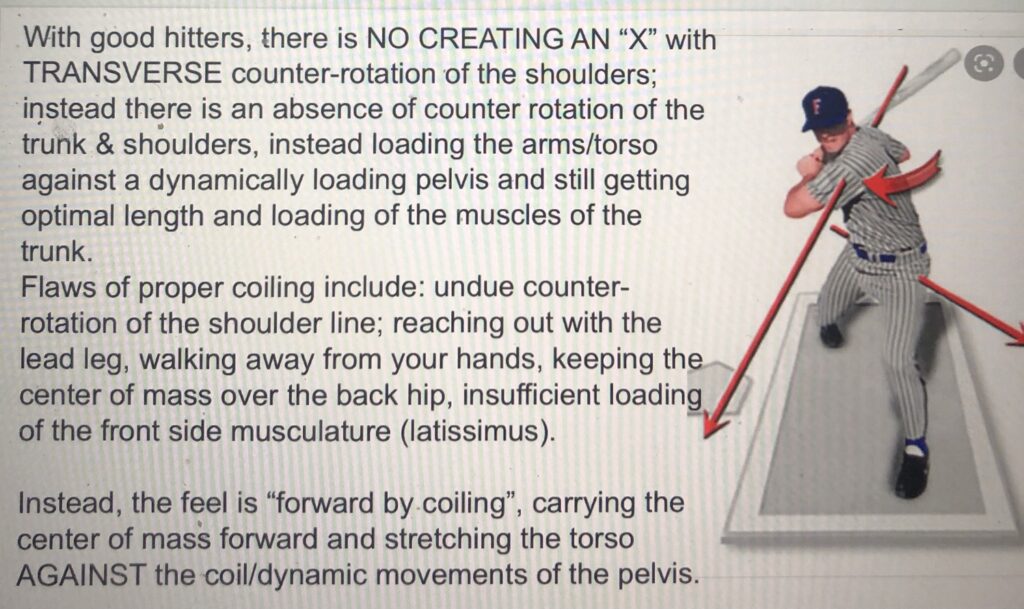
Golf relies on SSC (stretch shortening cycle) which focuses more on the eccentric part and getting maximum differential between the hips & shoulders by relying on shoulder counter rotation and over reliance of the transverse plane because the golf ball is sitting still on a tee.
The focus on maximizing the eccentric portion of the swing and an explosive concentric contraction focuses on raw power and speed without having to account for rate or adjustability for different pitch locations.
.25/second to complete the golf downswing; .14/second to execute the launch of a baseball/softball swing.
A 17” width by 41” height for the strike zone in baseball/softball versus 1.68” to cover for a golf ball.
BIG DIFFERENCES. HUGE DISTINCTIONS.
“TRUE” ROTATION: FEEL & USE & TRAIN THE MUSCLE SLINGS
Instead of talking about a differential between the hips and shoulders moving in opposite directions, I am suggesting movements of the spine; and my interpretation of this for hitting purposes is the use of the muscle slings that work contra-laterally and from proximal to distal to accomplish the cultivation of the elasticity and stretch needed to execute the launch of a baseball/softball swing in .14/seconds.
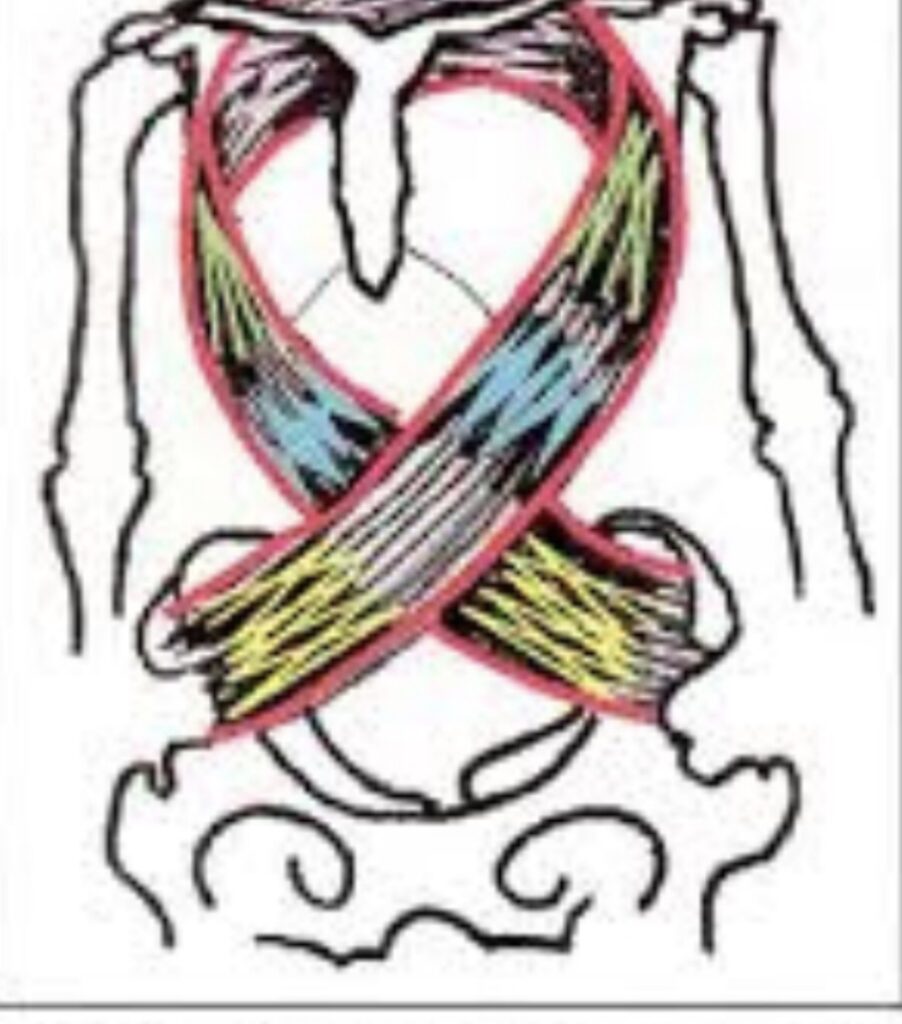
The muscle slings are mechanisms that act as a “smart spring”, using phasic contractions to store and release kinetic energy. Kinetic energy is built via these “global muscles” that originate in the pelvic and thoracic cage; know that it is this group of muscles working together or influencing each other through movement patterns that create “real torque” and real elasticity and real stretch.
Muscle slings are groups of functionally interrelated muscles; they provide proximal stabilization for distal movements; muscle slings operate under the principle of “tensegrity”, using synergy between tension and compression forces; muscle slings provide inherent stability as it rearranges itself in response to changes in load.
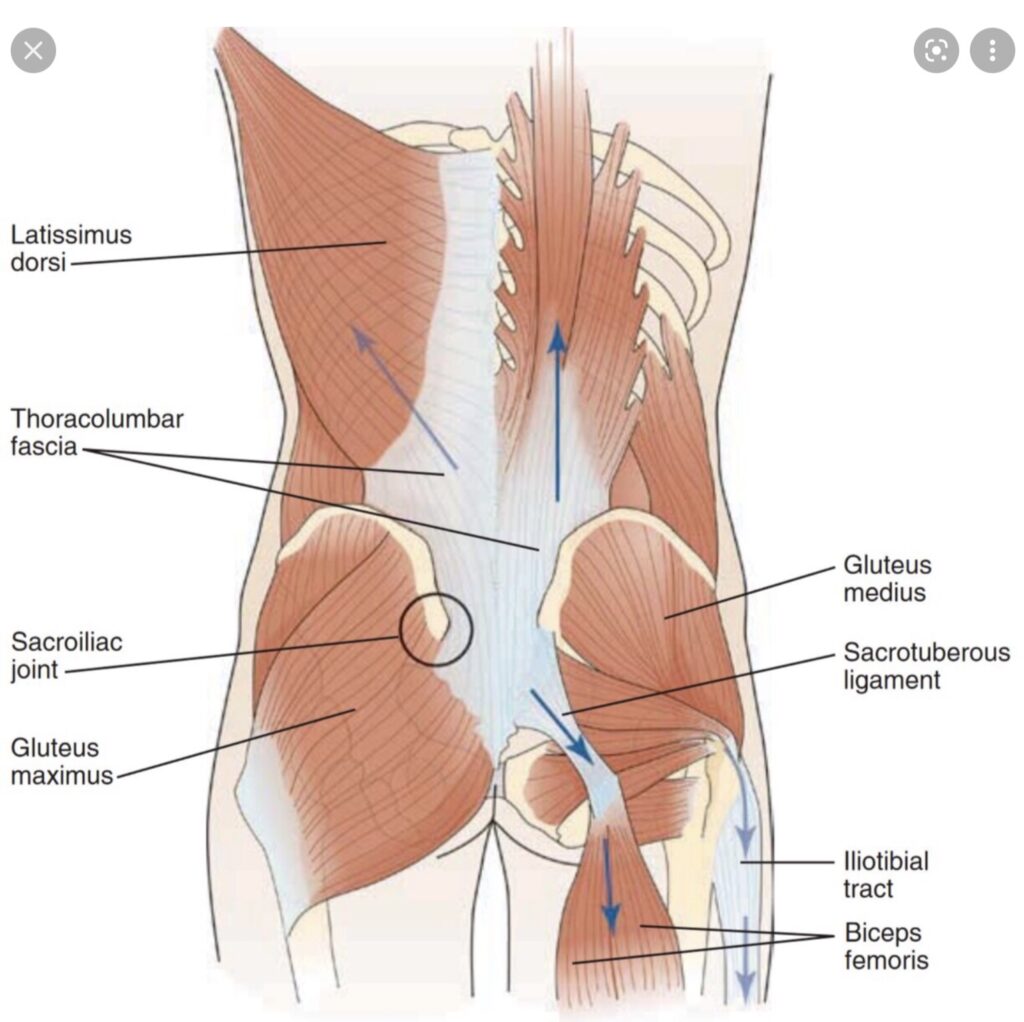
A hitter’s swing from toe touch to contact is approximately 14/100ths of a second. Some hitters try to “muscle up” like throwing a medicine ball or pulling a cable chop where neural firing rates are almost doubled the time of a hitter’s swing.
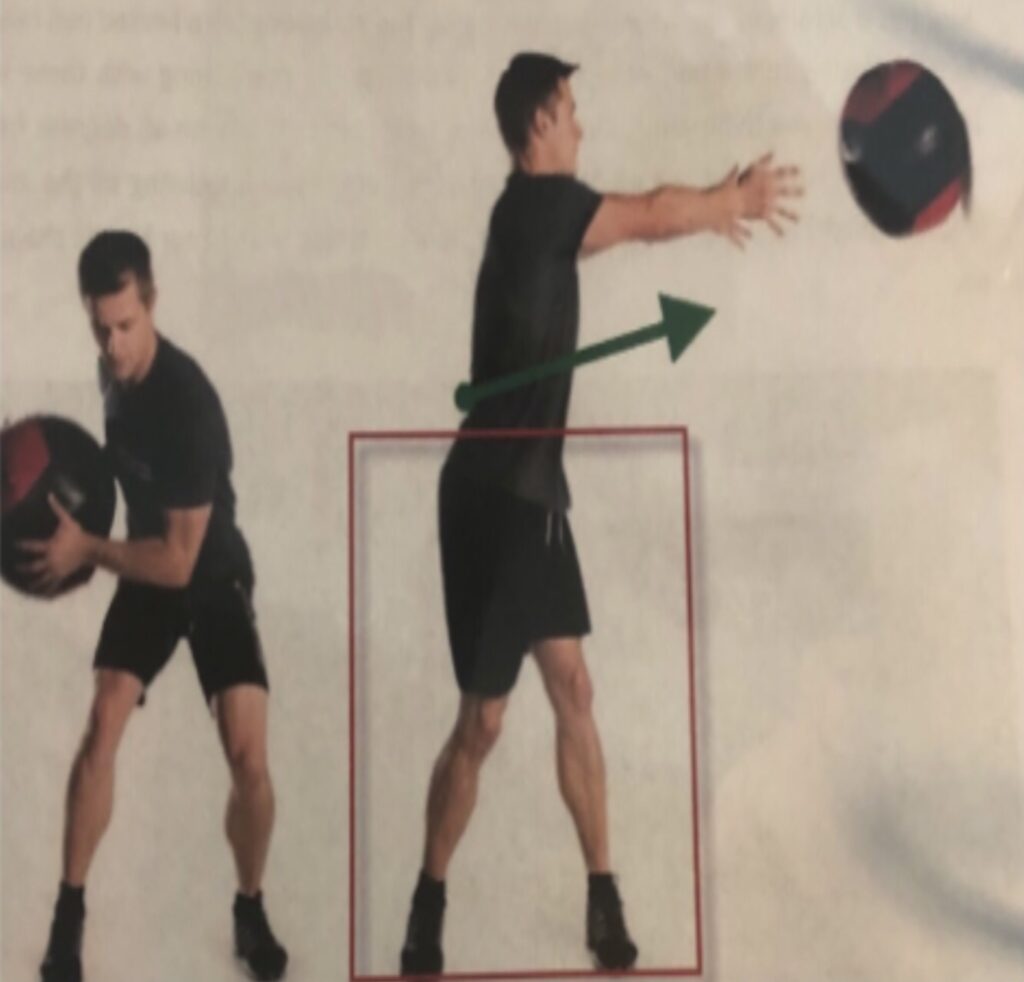
Forces in hitting are due to massive amounts of acceleration and deceleration; it is critical that the speed and rate of force development be at the forefront of EVERY training and movement decision.
Hitters that over rely on counter rotation of the shoulders to create transverse only torque or pinching the scapula or showing the numbers on the back of their jerseys or that are over dependent on any isolated muscle CANNOT continue to coil/stretch/cultivate elasticity until the ball is 10-14 feet away because it will take them 25/100th of a second to execute the swing instead of 14/100th, so they have to get their foot down early and all other types of compensatory movements in order to survive and compete.
PURSUE EXCELLENCE & WIN THIS PITCH!
About the Author
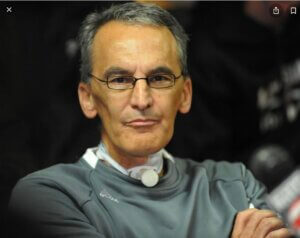
Mike Lotief coached 17 successful years as either the head softball coach or co-head softball coach with his wife Stefni Whitton Lotief at the University of Louisiana from 2002-2017 with an overall coaching record of 731-176 (80.6 winning percentage). Every season, the Ragin Cajuns softball team advanced to the NCAA tournament and also advanced to three (3) Women’s College World Series (2003, 2008, 2014) and from 2012-2016 advanced to five (5) straight NCAA Super Regionals. Coach Lotief produced over 40 All American selections and his 2017 team lead the nation in scoring and was ranked in the Top 10 in home runs, slugging percentage, on base percentage.
The coach is a cancer survivor (twice) and was the first person in the U.S. to receive the Pro Trach device. Mike and Stefni spearheaded and raised the funding to build the new softball stadium in 2009 and the new softball indoor hitting facility in 2015. They are proud parents to Chelsea, who played softball and graduated from the Univ. of Louisiana in 2018, and Andrew, who is a junior at Louisiana studying Mechanical Engineering.
Previous Articles in this Series
- The Mental Swing Attractors: Failure Cannot Break You (Nov. 11, 2021)
- Training Insights: “Swing Attractors” by Coach Mike Lotief… the Flaws of Pelvic Loading (Nov. 9, 2021)
- The Mental Swing Attractors: Push Yourself… You Don’t Have to Be #1 to BE #1! (Nov. 4, 2021)
- Training Insights: “Swing Attractors” by Coach Mike Lotief… Pelvis Loading, Part 2—The Planes of Movement (Nov. 2, 2021)
- The Mental Swing Attractors: Remove the Rope from Your Ankle & Get Rid of the Limiting Beliefs! (Oct. 28, 2021)
- Training Insights: “Swing Attractors” by Coach Mike Lotief… Pelvis Loading, Part 1—It’s All in the Hips (or Somewhere Deep Below) Oct. 26, 2021
- The Mental Swing Attractors: Champions are Developed by Devotion & Discipline! (Oct. 21, 2021)
- Training Expertise: “Swing Attractors”… the Secrets of Power Hitting by Coach Mike Lotief (Oct. 19, 2021)
More About Mike Lotief
- Why Michael Lotief is a Legendary Coach? by Jay Patel
- The Secret To Michael Lotief’s Success. By Jay Patel
- Michael Lotief Fights for Rajin’ Cajuns by Graham Hays ESPN
- Michael Lotief: Taking His Sport to New Heights by Neha Kapoor
- For the Love of the Game: A Look at Ragin’ Cajun Softball’s Power Couple
- How Louisiana-Lafayette’s Michael Lotief Develops Hitting Gems by Graham Hays ESPN
